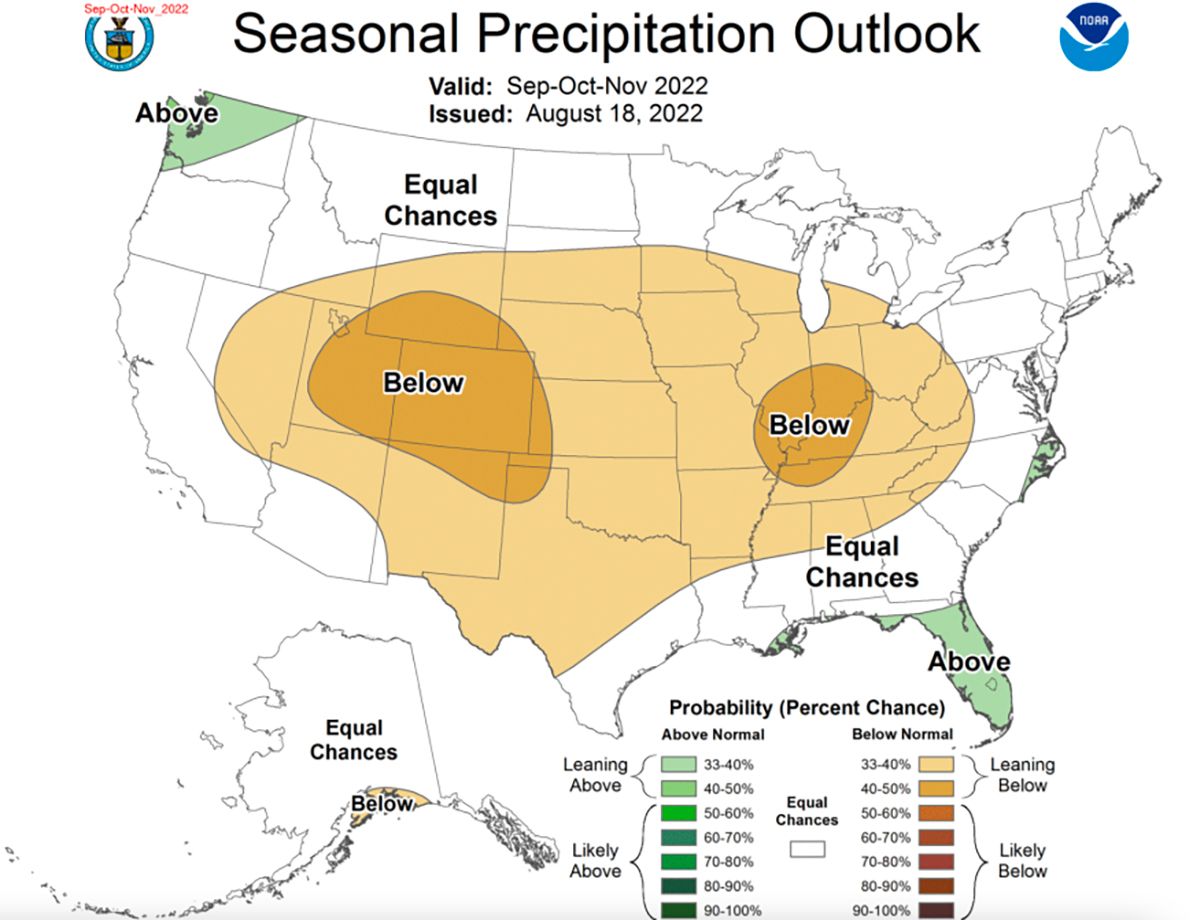This may be bad news for recovering from the ongoing drought, if not necessarily disastrous. But we are most definitely in for another winter of La Niña, which hasn't brought us sufficient rain and snow the past two years.
A third consecutive La Niña pattern has taken shape in the Pacific Ocean, and that's not excellent news. We already knew back in July, via the National Weather Service, that things were likely headed this way, and now the meteorologists have confirmed it. The weather service's Climate Prediction Center issued a La Niña Advisory on Thursday, saying that there is a 91% chance of the La Niña cycle continuing between September and November, but that chance goes down to 54% for January to March.
"There is an interesting split in the dynamical versus statistical model forecasts, with the latter set suggesting La Niña will persist longer, through January-March 2023," the forecasters write. "At this time, the forecaster consensus sides with the statistical models, although there is still large uncertainty over how long La Niña will last and when it will transition to ENSO-neutral (56% chance of a transition to ENSO-neutral during February-April 2023)." (ENSO is the El Niño-Southern Oscillation, and ENSO-neutral means neither El Niño nor La Niña.)
The phenomenon of three consecutive La Niña winters has only happened twice since 1950.
In a typical La Niña, as SFist has discussed in the past, our part of California is neither guaranteed to see more nor less rain, though if the patterns of the past two winters holds, signs point to less-than-average rain and lower-than-average snowpack in the Sierra — the latter has been the result of early snow and warm winter months. That all but guarantees us another year or two of this mega-drought.
However January to March could bring a shift, the meteorologists are saying. And as far as September to November goes, California isn't expected to see any more or less precipitation than average.

Only Washington State and Florida are likely to see a bit more rain this fall from this pattern, and the middle of the country should see less, says NOAA.
As Mike Halpert, deputy director of the Climate Prediction Center, explained to The Hill last week, having a winter with below-average precipitation means a lot more to states to like California where our rainy season is relatively short.
"Here in the Washington, D.C. area, it generally rains all year round. So if we have a couple of dry months, it’s OK because we can make it up another time," Halpert said. "When you’re in California and the Southwest, 90% of the rain falls in that fairly short winter and spring season. So if you miss that, you’re not going to make that up when you get into the summertime."
Previously: We Are On La Niña Watch For Third Year In a Row, Which Could Be Bad for Drought

